
Ever notice how just a few vocal samples can turn a good hip hop track into a great one? They’re more than just sound bites; they’re the secret sauce that spices up a beat and tells a story all at once.
When it comes to learning how to produce hip hop and how to use hip hop samples in your own productions, I’ve learned some clever tricks over the years and we’ll be covering the top five tips for working with hip hop vocal samples, so you can make sure your beats stay fresh and endlessly interesting. Let’s get sampling!
Jump to these sections:
- What vocal techniques are used in hip hop?
- How do you make hip hop vocals?
- Tips for working with hip hop vocal samples
Follow along with your own hip hop vocal samples created in Glaze 2, the ultimate vocal instrument for modern music.
What vocal techniques are used in hip hop?
When I began learning how to produce music, I noticed that different genres tend to treat the vocal differently. Pop vocals are often crisp, clear, and right in the middle; whereas rock vocals tend to come with a lot more grit and distortion. Since hip hop typically includes a blend of rap flows, melodic hooks, and ad-libs, the genre has employed a hugely diverse range of vocal processing techniques over the years. Here’s just a few of the many vocal processing techniques commonly found in hip hop:
- Pitch correction
- Vocal doubling
- Vocal layering
- Filtering
- Automated panning
- Reverb
- Formant shifting
- Distortion
- Time stretching
One of the things that makes the hip hop genre so sonically rich is that each vocalist and producer typically uses their own signature blend of the techniques listed above to help craft and define their unique style. For example, check out these hip hop tracks from JAY-Z, T-Pain, and 6LACK.
Hear how each artist uses very different vocal effects to achieve their signature sound? This is one of the main factors that contributes to the hip hop landscape being so wildly diverse. To learn more about vocal mixing techniques, check out this article on hip hop vocal production.
How do you make hip hop vocals?
When it comes to how to produce hip hop vocals, there are a few different strategies. You could obviously record your own vocals, use recordings of other artist’s vocals, or pull from a free vocal library. But, for this tutorial, we will share how to create your own hip hop vocal samples using the new Glaze 2 Kontakt instrument, a pop and hip hop vocal instrument featuring instant, complex harmonies with over 30 custom chord sets and background vocals mapped to keys, custom presets, and more.
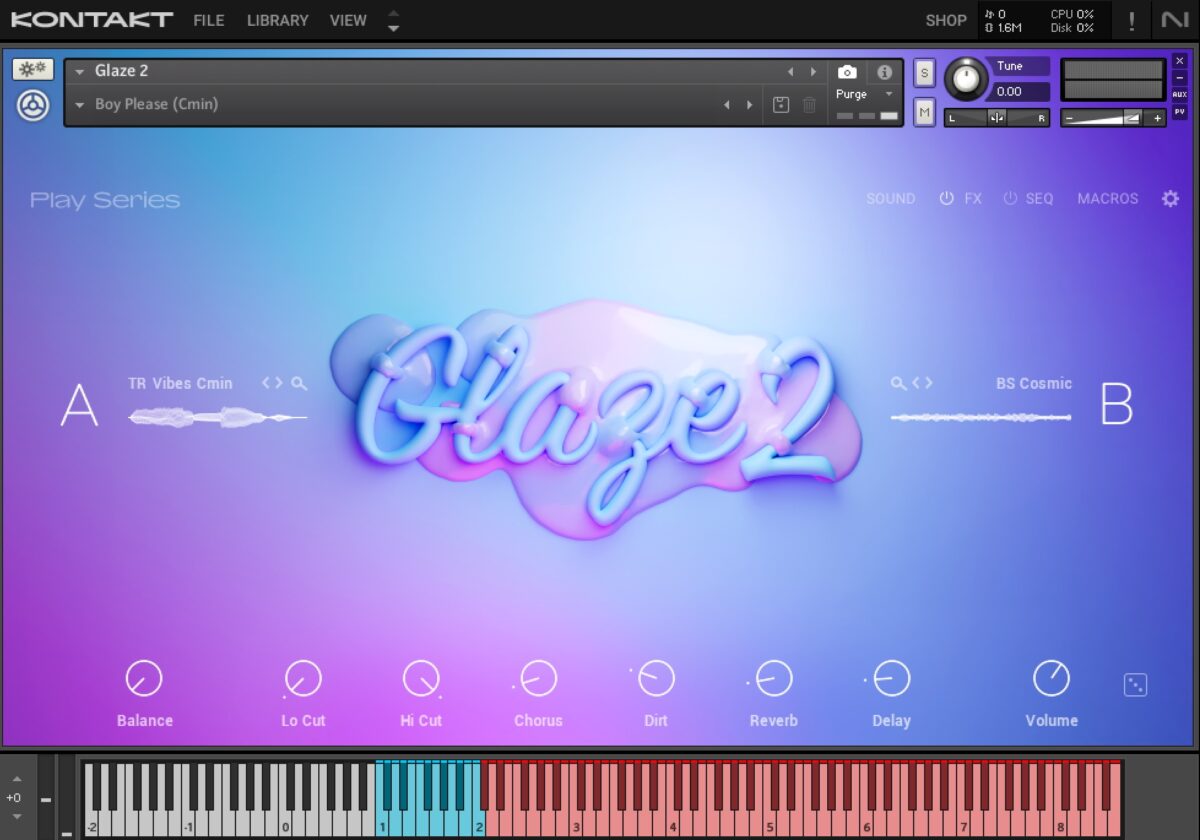
Tips for working with hip hop vocal samples
In order to demonstrate these professional tips for working with hip hop vocal samples, I created a simple hip hop beat using just a drum pattern from the Rudiments Kontakt library and an 808 style bass in the Massive synthesizer. Give it a listen.
The Rudiments Kontakt instrument comes with many hip hop drum samples all organized into pre-made, pre-mixed kits. My favorite part of Rudiments is that each kit has 16 different hip hop drum patterns included, all of which can be edited in any DAW with MIDI drag and drop. This gives so many options to spark your inspiration, but then allows you to quickly and easily make it your own.
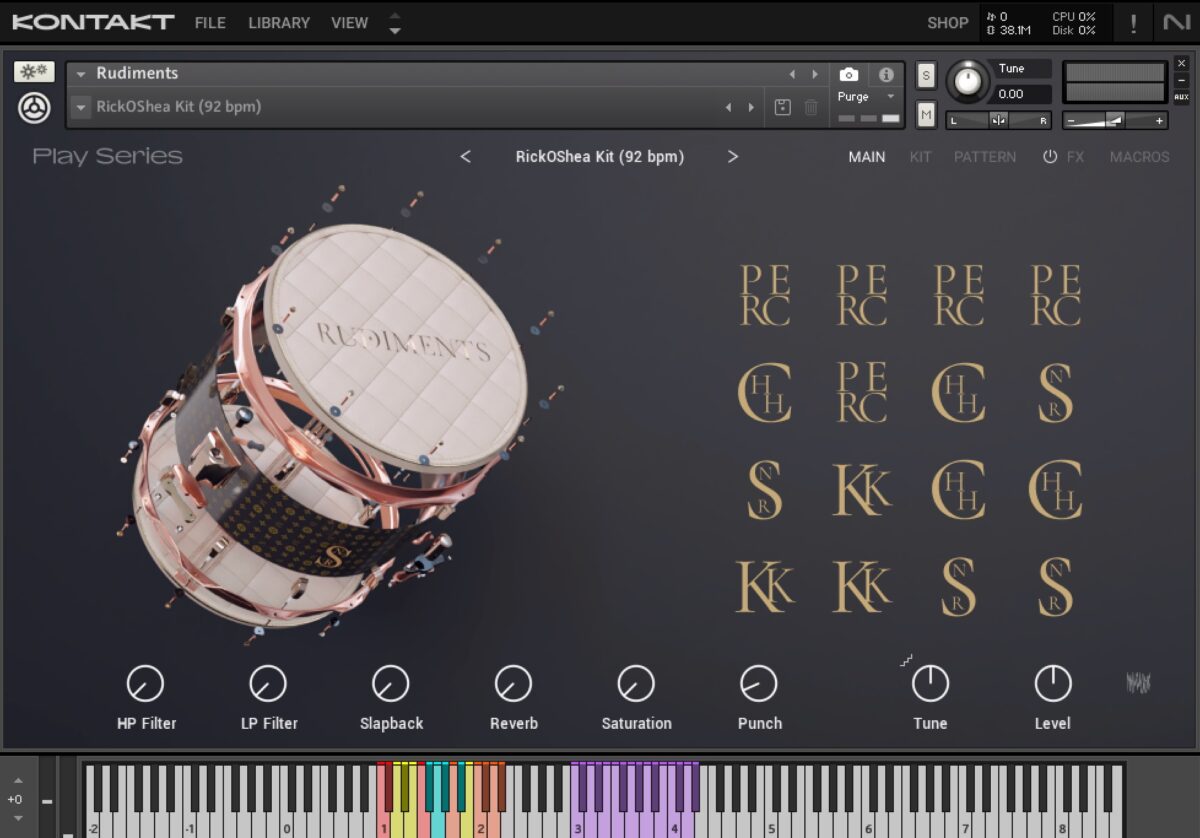
For more on how to use hip hop samples to create new drum patterns, check out this hip hop drums 101 guide.
For the sub bass in my beat, I used a Massive preset from the Stadium Flex Expansion called Thuggish 808.
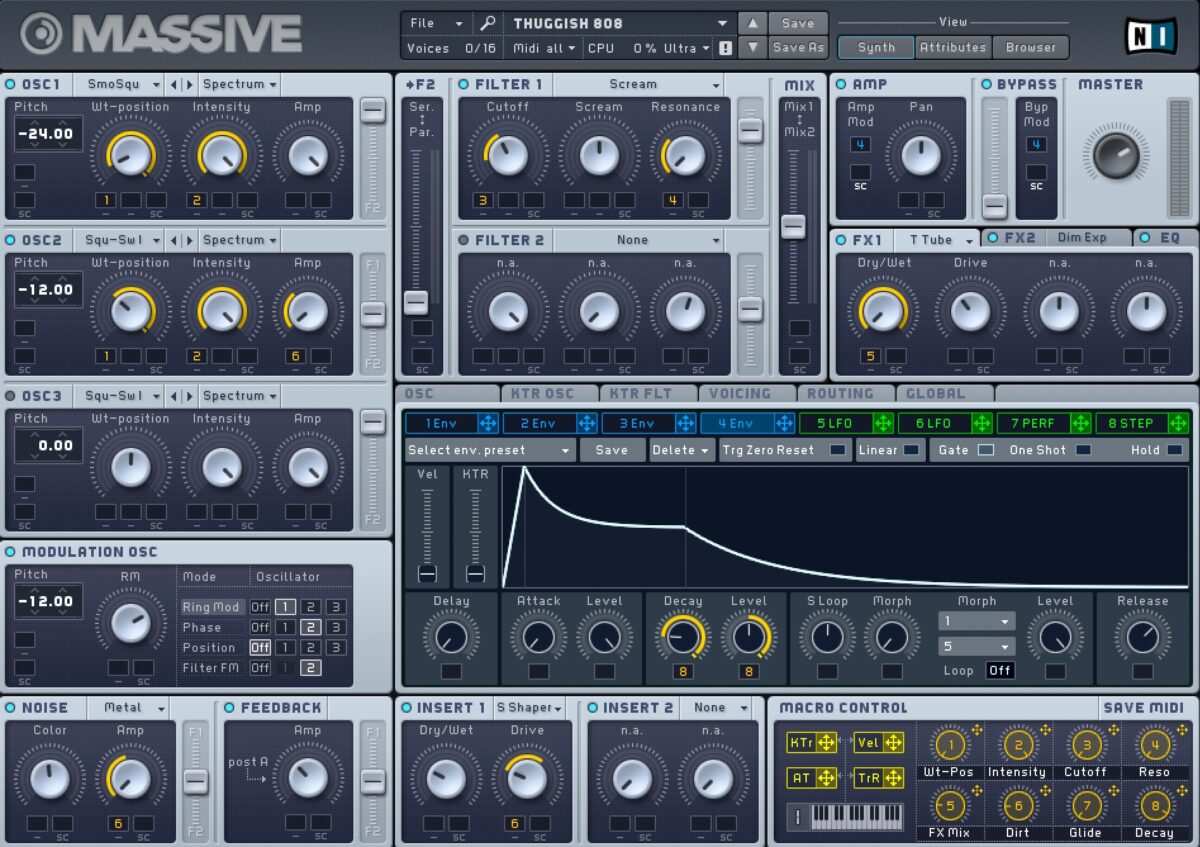
Now that we’ve got a basic backing beat, let’s pull up Glaze 2 and start messing around with some hip hop vocal samples to give you some ideas of what you can do with it.
1. Chop and sequence
My first tip is to use hip hop vocal samples to create “vocal chops”. Vocal chops have become a staple in hip hop because they can provide a unique textural and rhythmic element to tracks. To hear what I mean, take a listen to “Bakteria” by Julez Jadon.
By chopping and sequencing vocal samples to create new riffs, you can add a lot of sonic interest to any beat, whether you’re producing instrumental hip hop or a backing track for a vocalist to topline over. I wrote a whole article on how to create vocal chops but, for this piece, we’re going to look at how easy it is to make a new vocal chop phrase using Glaze 2.
One of my favorite features of Glaze 2 is that it includes several “Riff & Run” presets which make those chopped ’n’ screwed vocal phrases super simple to make. For this demo, I loaded up a preset called “Boy Please” and then used my Komplete Kontrol S49 to trigger the various hip hop vocal samples included in the preset. This is what I came up with, overtop the original beat:
As you can see by my MIDI below, it doesn’t need to be too complicated to get a complex-sounding vocal chop. With Glaze 2, each of the “Riff & Run” presets are tuned to a specific key, so it makes crafting fresh vocal chop phrases quite simple. Since all of the hip hop vocal samples in each preset are in the same key, this ensures your chops will always sound good and cohesive.

Honestly, you can press any key combination in one of these presets and it will sound great. I’ve already had hours of fun just playing around with different combos and getting inspired for new beat ideas.
2. Shift the pitch
Another common technique for how to produce hip hop vocal elements that sit well in a mix is to use pitch shifting. Most DAWs include the ability to shift the pitch of your audio once it’s bounced to a WAV file, but if you’re using Glaze 2, you can just do the pitch shift right within Kontakt using the Tune knob.
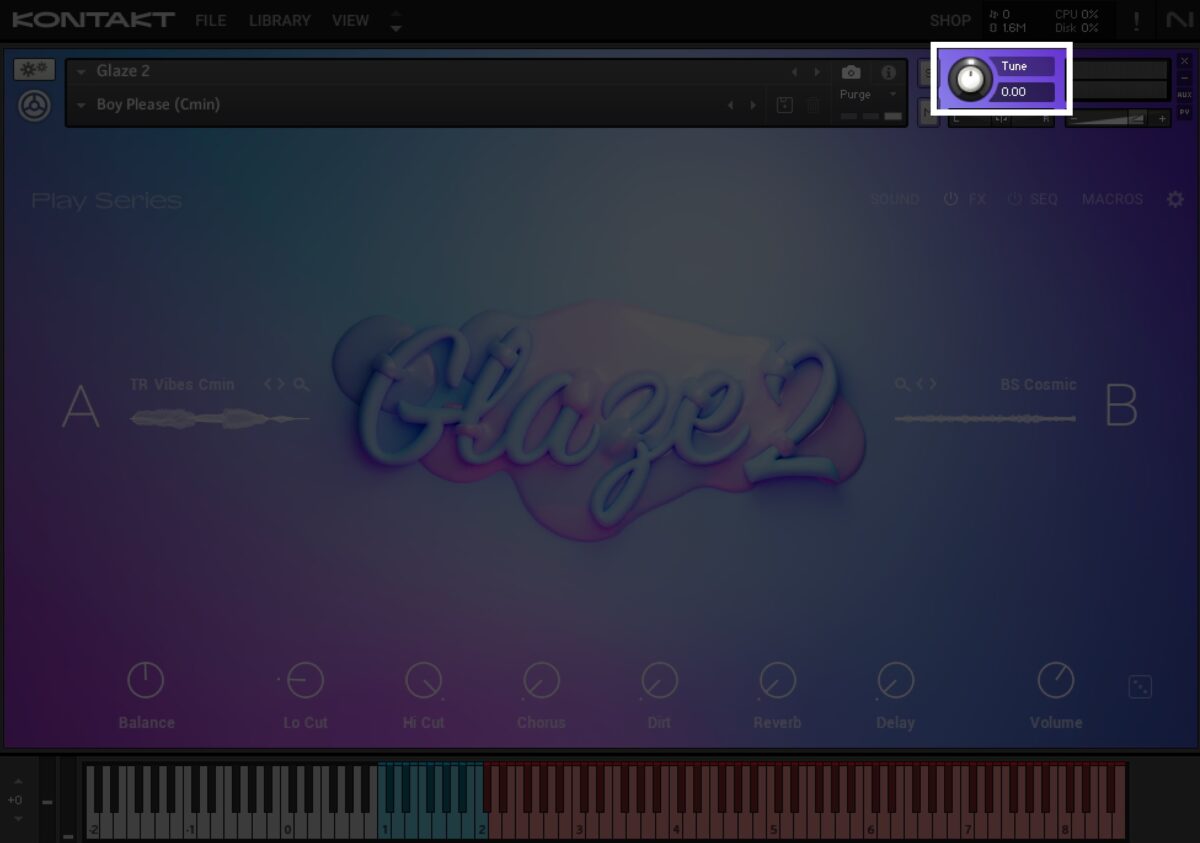
For this example, I’ll use the same vocal phrase I created above, and then I’ll simply adjust the Tune knob to -12. This will pitch all of the hip hop vocal samples in Glaze 2 down a full octave. Take a listen.
This trick is typically used when creating backing tracks because it helps keep the non-lyrical vocal elements out of the way of the main hip hop vocal, allowing the vocalist’s lyrics to shine through.
3. Automate the filters
If you’re wanting to learn how to produce hip hop vocals that have plenty of depth and dimension, try adding a low-pass and high-pass filter to the effects chain and then apply some automation to each filter in order to modify the sound over time. This will provide some additional sound coloring and will help to keep things interesting.
Since Glaze 2 comes with a variety of filters (along with a pretty robust effects rack), you can add the automation right from within the Kontakt instrument. For example, try playing with the position of the “Lo Cut” and “Hi Cut” knobs when recording your automation.
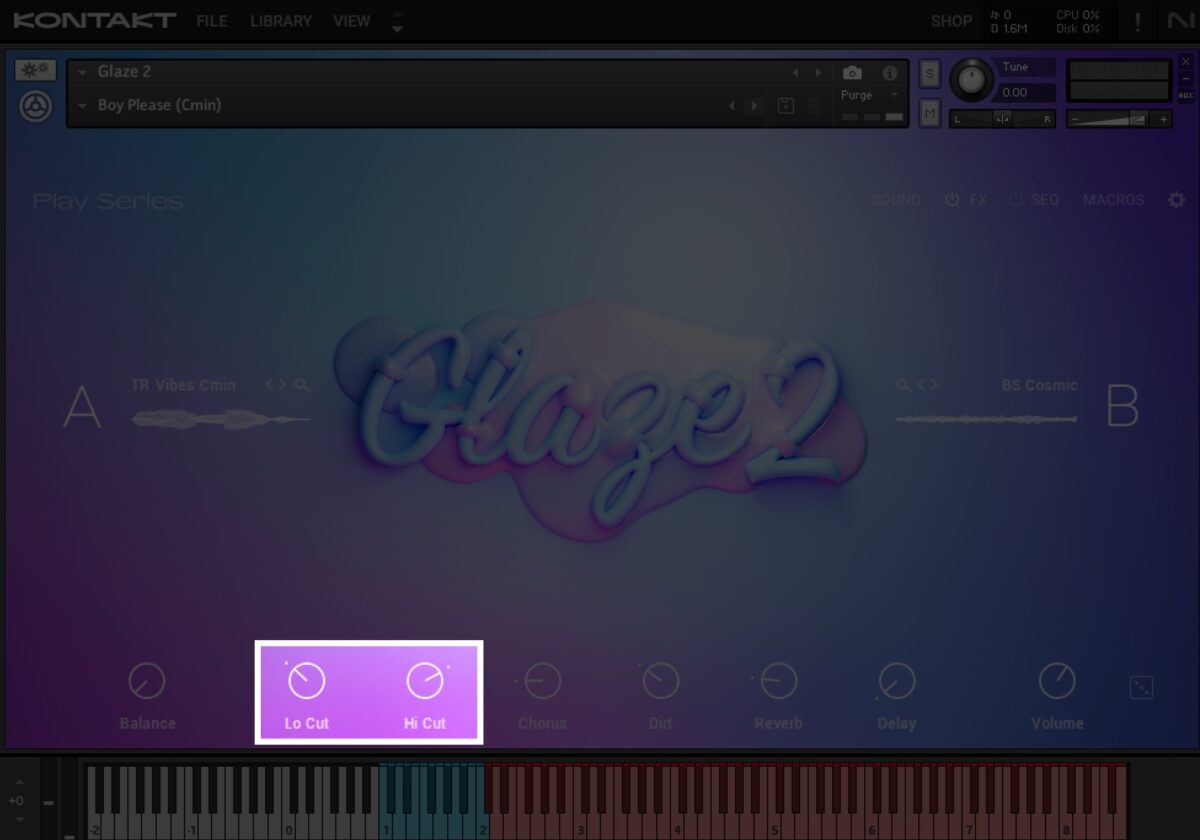
Modifying these EQ filters will give your sound some more movement and help breathe a bit of extra life into your hip hop vocal phrases. Take a listen to the effect this can have down below.
See how much of a difference it makes to wiggle those knobs just a bit?
PRO TIP: Try automating all the different macro controls located at the bottom of the Glaze 2 main screen. Each macro has been carefully programmed to transform the sound in an aesthetically pleasing way, but by modifying their position over time, you can really transform, shape, and sculpt these hip hop vocal samples to achieve just the sound you’re looking for.

4. Layer your vocal samples
One way to add thickness and dynamics to your hip hop track is to layer different vocal tracks on top of each other. By stacking multiple vocals, you can really bulk up the sound of the vocal section in your track. Let’s take a look.

To create a full, rich vocal sound, I simply included both the vocal riff I applied the filter automation to, along with the pitched down version. As you can see above, I bounced each vocal chop to a separate WAV file and then I cut out the second half of each bar from the pitch-shifted vocal to give the full phrase more of a dynamic quality. Then, I ran the pitched vocal through iZotope Ozone (included in the Komplete 14 bundle) and used the Imager module to add some extra stereo width.
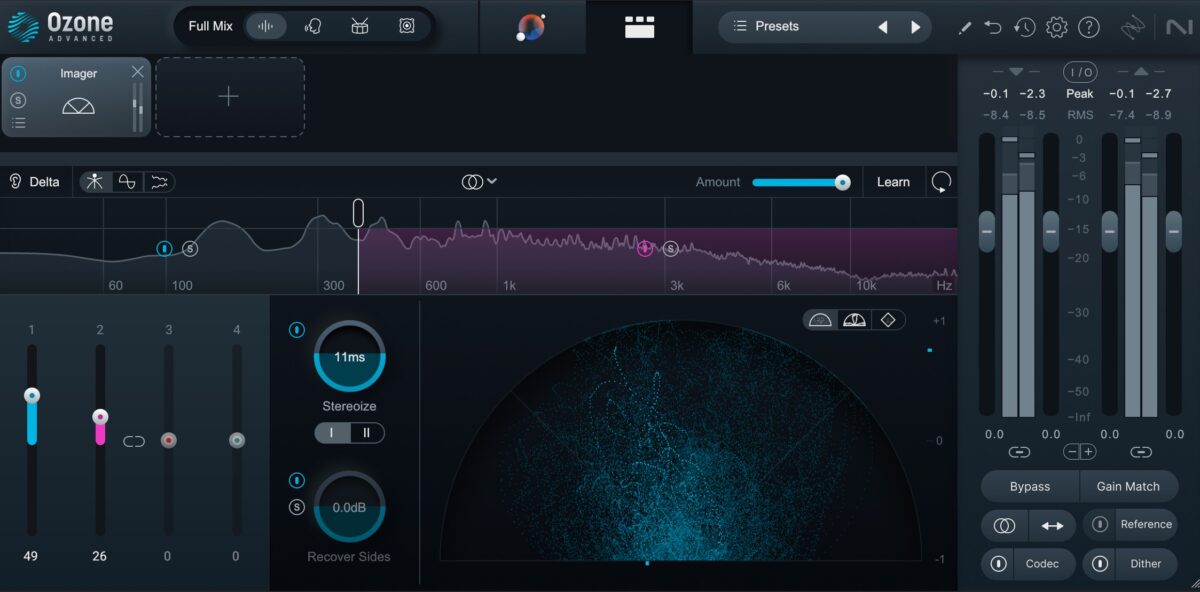
Take a listen the to the result below.
Do you notice how much bigger that vocal sounds now? By stacking different versions of the same audio (but with slightly different processing applied), you can easily beef up any instrument – that’s one of the best tricks I’ve learned for how to use hip hop samples and make them truly your own.
For more tips on layering vocals, check out this other article on vocal layering.
5. Reverse ‘em
My last tip is one of my all time favorite production tricks to use in my own music. If your vocal samples just aren’t doing it for you, try reversing them! When working with vocal chops especially, this trick nearly always yields some pretty sweet results. Take a listen to the vocal riff we’ve been working with, but played backwards over the beat instead.
When played in reverse, you’ll still keep the sonic quality of the vocal, but it can often make it sound quite a bit more interesting. So, if you’re ever feeling creatively stuck working with your library of hip hop vocal samples, definitely try reversing them to see if that does the trick. If anything, it should at least provide some fresh inspiration!
Get working with hip hop vocal samples
Now that we’ve covered a handful of professional techniques to get the most out of working with hip hop vocal samples, it’s time for you to try it out for yourself. Whether you’re chopping, shifting pitches, or playing around with layering and reversing samples, you will have loads of fun messing around with the sounds and features included in Glaze 2. And for further reading, check out 5 more ways you can use vocal samples to add sparkle to your hip hop productions.















